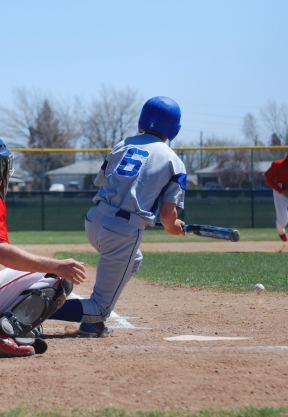The Situation: Man on 1st, nobody out, the 2-hitter is at the plate. The game is tied in the bottom of the 7th. The defense’s bunt defense has the third baseman crashing and the first baseman staying home.
The Play: As the pitcher comes set, the hitter moves up in the box and on the plate, and squares around to bunt. The pitcher fires a fastball just off the outside corner. The hitter leans towards it, and jabs slightly, bunting right through the pitch. The runner on first, anticipating a bunt, is caught taking a stutter-step, leaning towards second.
The Outcome: The catcher fires a quick back-pick to the first baseman, picking off the runner at first, and eliminating the threat.
What Went Wrong?
Both the hitter and the runner made mental mistakes in this play. Bunting is an art in college. No matter what spot you are hitting in in the order and what your beliefs are about the usefulness of sacrifice bunts, you will likely be called on to bunt at some point in your career. Great bunters are a special breed, but every hitter has to have the ability to get the sacrifice down. The fundamentals have probably been taught to you for years: square to bunt, put the bat at the top of the strike zone, and bunt strikes. But a lot of hitters get overanxious and try to go get the ball, jabbing at it, instead of letting it come to them. To be a good bunter, you have to be comfortable with letting the ball come to you. “Catch” the ball with your bat. It will give you better bat control, and help you stay balanced in your stance. Not jabbing will also give you better control over the bat and better allow you to get the ball to the ground quickly, where the ground can help deaden the ball.
The much more grievous mental error in this situation comes on the part of the runner. As a base runner, you can never expect the bunt to be put down. You’ll hear coaches say “See down angle.” That’s means that you need to see the ball hit the bat and angle down towards the ground. Just seeing contact is not enough, because you’ll get caught leaning if the hitter pops the bunt up. See the ball hit the bat and angle down towards the ground before breaking. You don’t need an A+ jump off the bag. It’s the hitter’s job to put down a good enough bunt to advance you.
Understand the situation both at the plate and on the bases. Slow the game down, and execute your job. Think the game!







